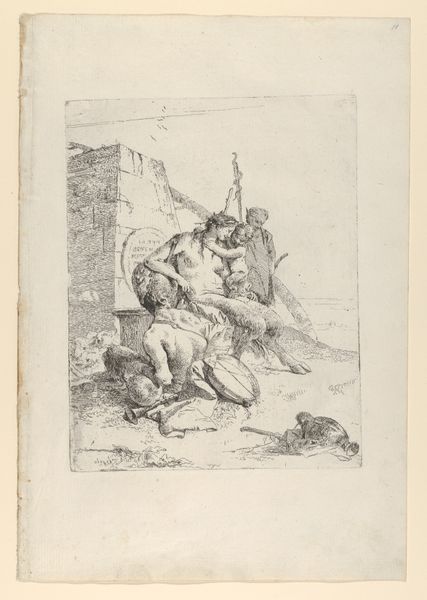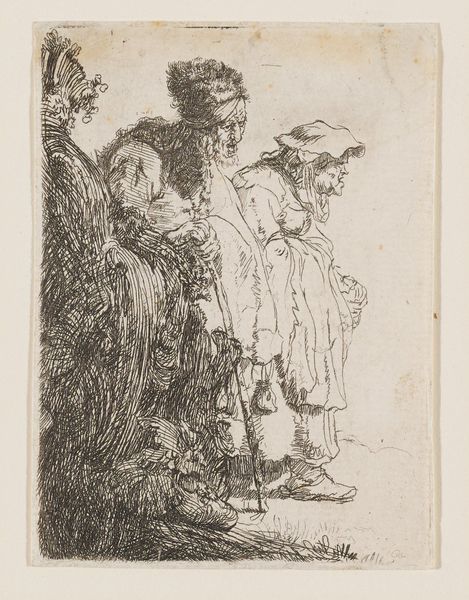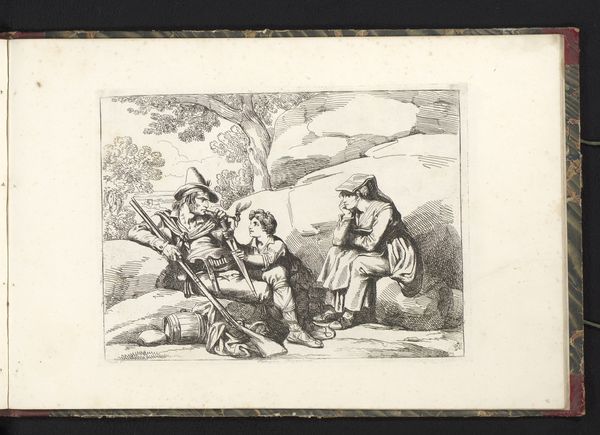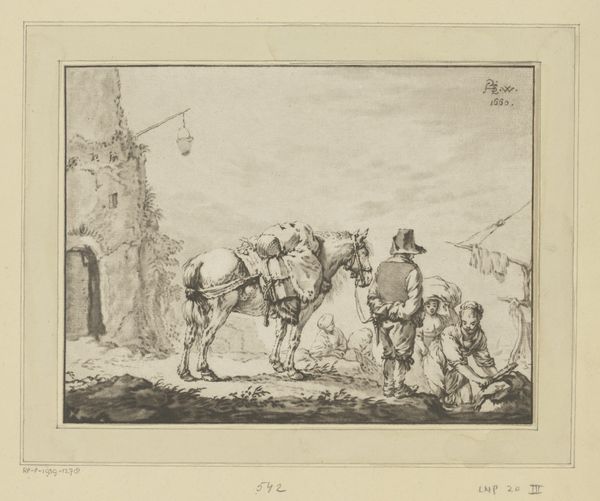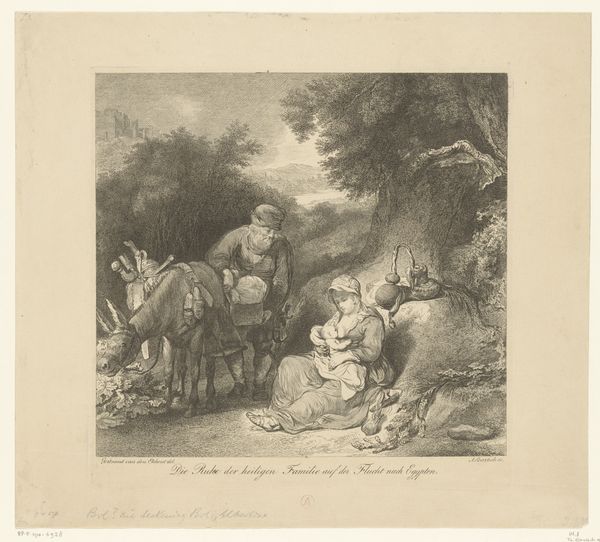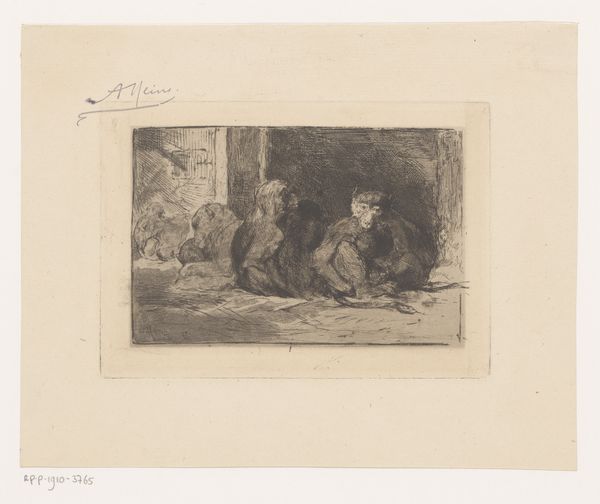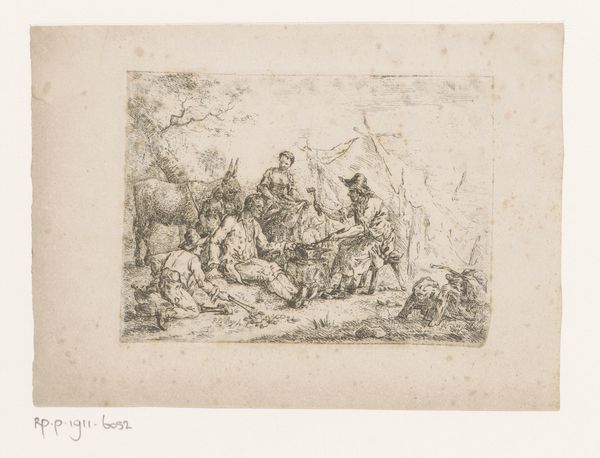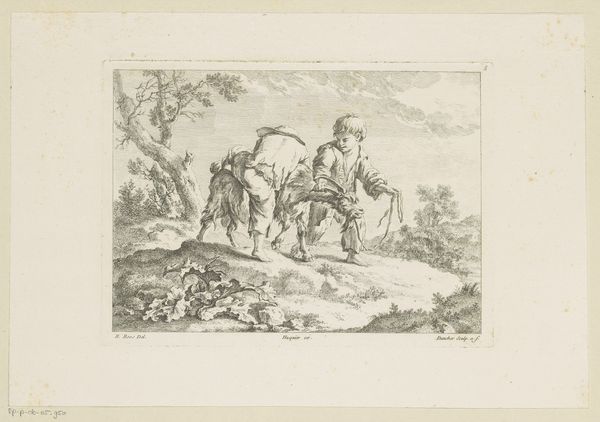
print, etching, engraving
#
baroque
# print
#
etching
#
landscape
#
etching
#
figuration
#
genre-painting
#
engraving
Dimensions: 110 mm (height) x 121 mm (width) (plademaal)
Curator: This delicate etching by F.C. Scholten, titled "Landskab med figurer," dates back to 1742. There's a pensive stillness to the scene that I find intriguing. What strikes you initially? Editor: The contrast between the finely dressed couple standing rather stiffly and the seated figure who seems quite dishevelled, perhaps weary from their work. There’s a rawness in that seated figure that resonates immediately. It feels… tactile despite being a print. Curator: I think that juxtaposition speaks volumes about 18th-century societal structures and the performance of class. Consider the gazes and posture: who holds power, and who is relegated to the margins within this “landscape with figures?" And further: Who holds and bears witness to history here? Editor: Precisely. The etching medium itself contributes to that observation, doesn't it? Think of the labor involved in creating this image – the artist’s hand meticulously etching lines to depict both the wealthy and the working classes and how those processes relate to consumption. It's all interconnected in the printmaking. Curator: Definitely, and how interesting to explore the landscape in terms of intersectional aesthetics as not just a backdrop, but an active agent of symbolic exchange in the piece. Gender roles also seem quite pronounced with a distinct presentation by the fashionable duo. What commentary do you find the artwork perhaps offering on that dichotomy? Editor: Perhaps. Also look at the ink itself. Its material presence, the paper’s weave and even the pressure of the press – all evidence of production and material that contribute to our interpretation. To ignore that would be, dare I say, looking at the powerful couple with biased eyes. Curator: It’s impossible, really, to extract any work of art from a set of complicated and often conflicting interpretations that surround it. With a work like this one, we see an era unfolding that provides insight into how different social roles intersect in how individuals are situated. The artwork shows its historical moment and continues its engagement with modernity today. Editor: A compelling example how labor, leisure, and even our interaction with material, create historical context.
Comments
No comments
Be the first to comment and join the conversation on the ultimate creative platform.


